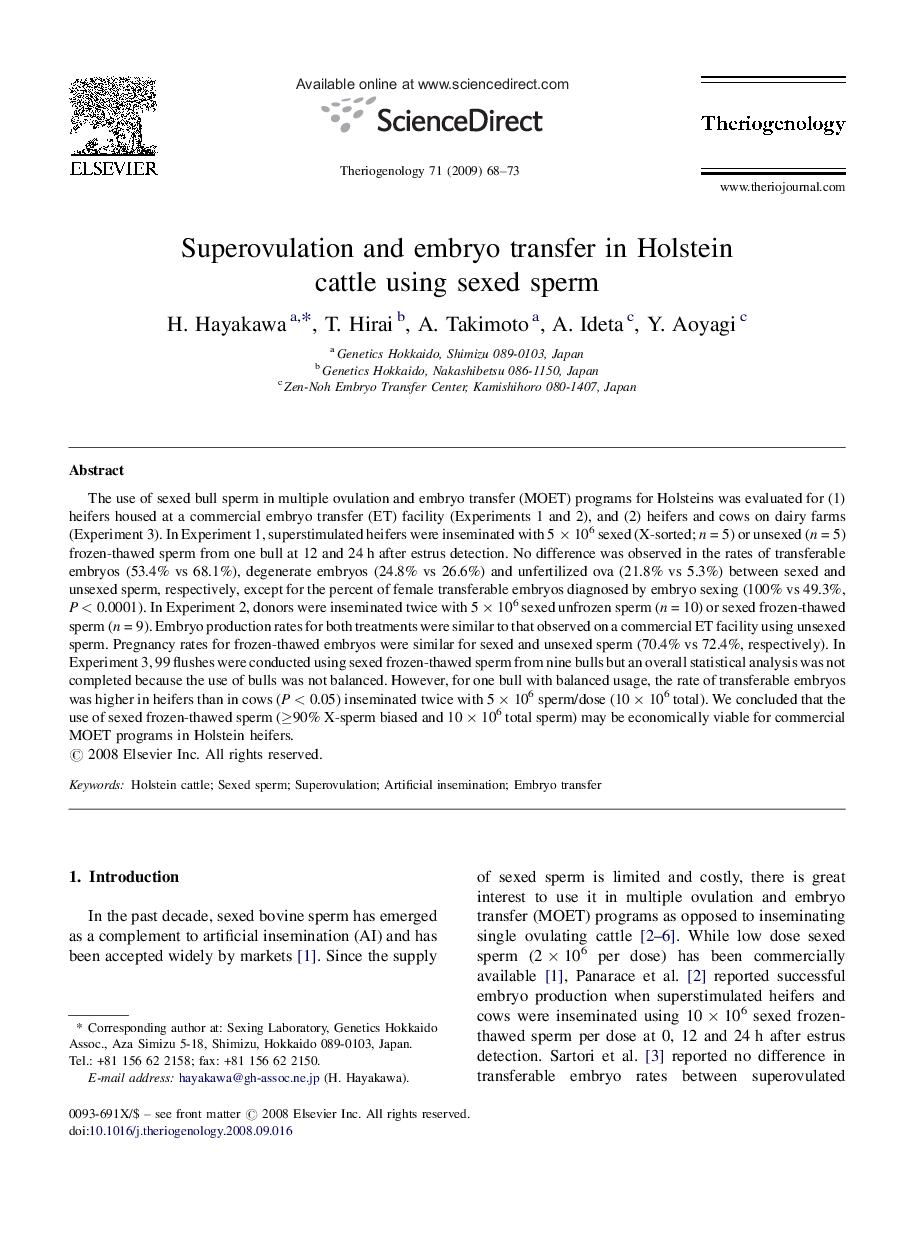| Article ID | Journal | Published Year | Pages | File Type |
|---|---|---|---|---|
| 2098113 | Theriogenology | 2009 | 6 Pages |
The use of sexed bull sperm in multiple ovulation and embryo transfer (MOET) programs for Holsteins was evaluated for (1) heifers housed at a commercial embryo transfer (ET) facility (Experiments 1 and 2), and (2) heifers and cows on dairy farms (Experiment 3). In Experiment 1, superstimulated heifers were inseminated with 5 × 106 sexed (X-sorted; n = 5) or unsexed (n = 5) frozen-thawed sperm from one bull at 12 and 24 h after estrus detection. No difference was observed in the rates of transferable embryos (53.4% vs 68.1%), degenerate embryos (24.8% vs 26.6%) and unfertilized ova (21.8% vs 5.3%) between sexed and unsexed sperm, respectively, except for the percent of female transferable embryos diagnosed by embryo sexing (100% vs 49.3%, P < 0.0001). In Experiment 2, donors were inseminated twice with 5 × 106 sexed unfrozen sperm (n = 10) or sexed frozen-thawed sperm (n = 9). Embryo production rates for both treatments were similar to that observed on a commercial ET facility using unsexed sperm. Pregnancy rates for frozen-thawed embryos were similar for sexed and unsexed sperm (70.4% vs 72.4%, respectively). In Experiment 3, 99 flushes were conducted using sexed frozen-thawed sperm from nine bulls but an overall statistical analysis was not completed because the use of bulls was not balanced. However, for one bull with balanced usage, the rate of transferable embryos was higher in heifers than in cows (P < 0.05) inseminated twice with 5 × 106 sperm/dose (10 × 106 total). We concluded that the use of sexed frozen-thawed sperm (≥90% X-sperm biased and 10 × 106 total sperm) may be economically viable for commercial MOET programs in Holstein heifers.
